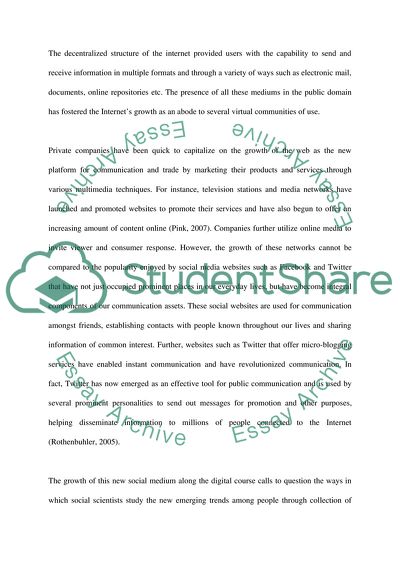Cite this document
(Use of Ethnography in Social Media Coursework Example | Topics and Well Written Essays - 2000 words, n.d.)
Use of Ethnography in Social Media Coursework Example | Topics and Well Written Essays - 2000 words. https://studentshare.org/media/1736698-new-media-research-methodologies
Use of Ethnography in Social Media Coursework Example | Topics and Well Written Essays - 2000 words. https://studentshare.org/media/1736698-new-media-research-methodologies
(Use of Ethnography in Social Media Coursework Example | Topics and Well Written Essays - 2000 Words)
Use of Ethnography in Social Media Coursework Example | Topics and Well Written Essays - 2000 Words. https://studentshare.org/media/1736698-new-media-research-methodologies.
Use of Ethnography in Social Media Coursework Example | Topics and Well Written Essays - 2000 Words. https://studentshare.org/media/1736698-new-media-research-methodologies.
“Use of Ethnography in Social Media Coursework Example | Topics and Well Written Essays - 2000 Words”. https://studentshare.org/media/1736698-new-media-research-methodologies.


